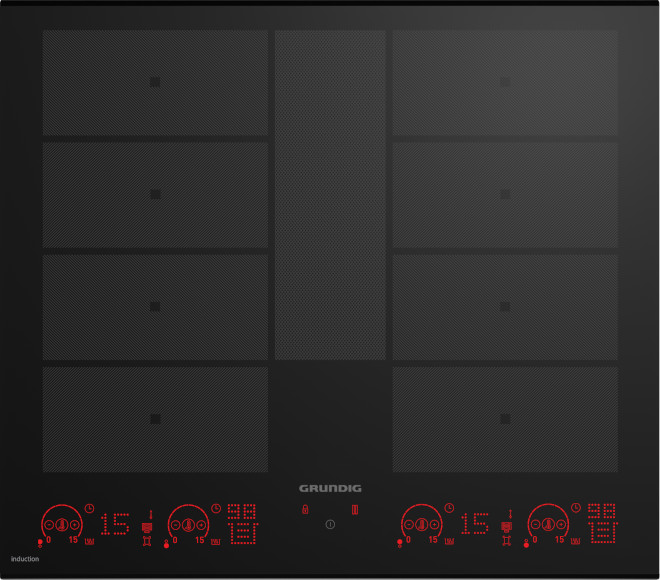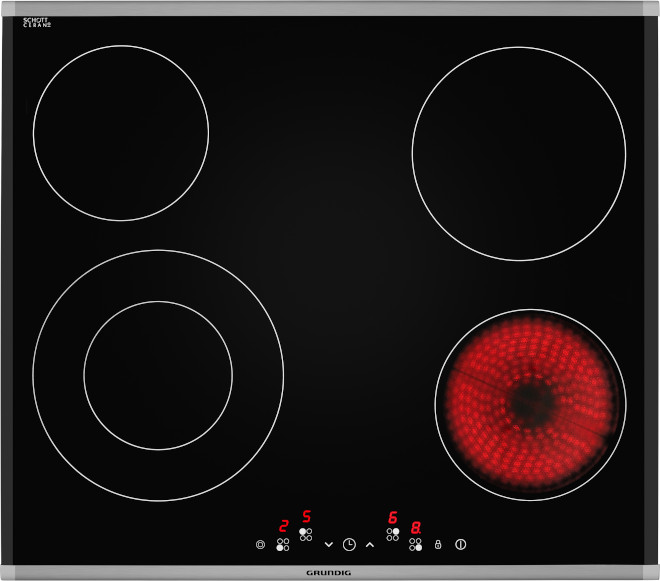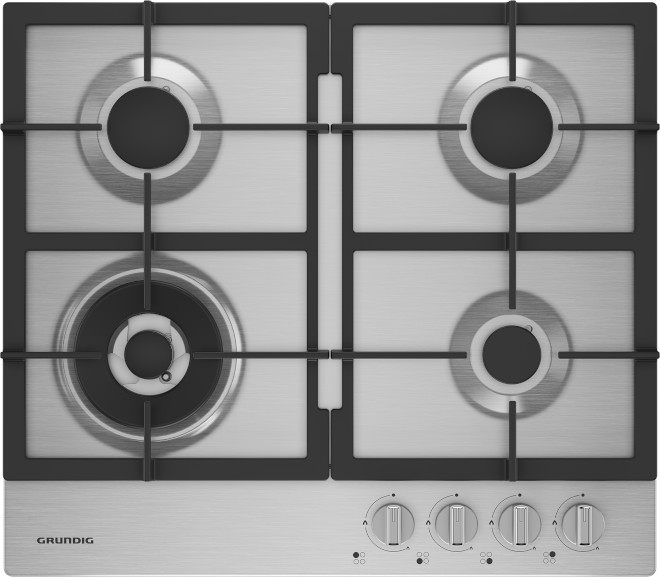Built-in Hob Buying Guide
Looking for a new built-in hob? Whether it's for your dream kitchen or simply an overdue upgrade, we can help you determine the most important factors to consider when making your final choice. From fuel types, size, and the number of cooking zones, to advanced technologies, as well as heating and cooling times, this comprehensive guide outlines the key features of Grundig's built-in hobs, helping you choose the perfect built-in hob for your home'
This handy guide outlines the key features of Grundig's built-in hobs. Here, we list the pros and cons of induction, ceramic, and gas hobs to help you compare and contrast, so you can make a fully informed decision about your purchase.
Built-in Hob Types
The Grundig range offers three types of built-in hobs– induction, ceramic and gas. Induction and ceramic hobs are powered using electricity, whilst conventional gas hobs require access to a mains gas supply. Here is a detailed overview of each type to help you decide which is right for you.
-

-
Induction Hob
With soaring energy prices, induction hobs have become increasingly popular. Powered by electricity, they use a rapid, low energy, electromagnetic copper ring system to generate heat. This unique system heats the pan directly and leaves the cooking zone cool to the touch once the pan is removed, making it easy to wipe clean with a damp cloth. Say goodbye to stubborn, burnt hob surfaces. With touch control displays and virtually no cooling time, induction hobs are often the safer and more energy-efficient option, especially in small spaces. Initially a pricier purchase, in the long-term, an induction hob is a safe, convenient, and cost-effective cooking option for your home.
If you're switching to an induction hob from a gas or ceramic one, you will probably need to upgrade your cookware. Remember, the efficient electromagnetic copper-ring system on an induction hob only works with pans that have a magnetic base. These include all cast iron and some stainless steel pans.
-

-
Ceramic Hob
The smooth surface design of a ceramic hob is versatile, sleek, resilient to scratches, and really easy to clean. Once cooled, you can simply use a damp cloth to wipe it down. Powered by electricity, installation is convenient and easy. It is helpful to note that the heat on a ceramic hob is more difficult to control and the cooking zones may take longer to heat up than on an induction hob. They also take a long time to cool down once switched off but often have a heat indicator to warn you when the hob is too hot to touch.
-

-
Gas Hob
If you love to cook, a conventional gas hob provides instant heat and ultimate control over your cooking. However, its various components do make it a little trickier to clean and use. Once you're up and running, the easy control over the size of the flame puts it ahead of any electric hob when it comes to cooking with precision.
Remember, you will need access to a mains gas supply to install a gas hob. You should enlist a certified Gas Safe engineer to install your new gas hob.
Size
Choosing the right size hob for your needs can be tricky. First and foremost, you need to consider the width of your hob, making sure it is the right size for your overhead cooker hood and unit underneath. A larger hob with additional cooking zones or gas rings might seem like the best option for you, but is there enough space?
-
-
75cm
Grundig's 75cm gas hob features 5 burners, with a large double ring burner at its centre that is ideal for high-heat dishes and heavy-duty pans.
-
80cm
Grundig's largest hob is the 80cm induction. It has 8 cooking zones and 2 extension zones for flexible and efficient cooking.
What to consider during planning
-
Size
Choosing the right size hob for your needs can be tricky, and it's important that you always consider what can comfortably fit in the designated space for your hob. First and foremost, you need to consider the width of your hob, making sure it is the right size for your overhead cooker hood and underneath unit. Check our helpful size guide for more information about the sizes we offer.
-
Cooker Hood Compatibility
Is the size and type of hob you have chosen compatible with your existing cooker hood? It is important that the hob you choose is the same width or smaller than your cooker hood. This is to make sure that all unwanted smells or smoke are taken care of, ensuring a clean and pleasant cooking environment for all.
-
Burners and Zones
How many burners and what type of cooking zones you need should be determined by the size of your household and the type of food you like to cook. Our Flexi and Extended Cooking Zones available on some of our larger Induction and Ceramic hobs can accommodate bigger pans that are super helpful when preparing for dinner parties or feeding a large family. For those keen to stick to a conventional gas hob, we also offer 5 ring gas hobs if you need the extra space. Many of our hobs also feature a specialist wok burner!

Energy Costs
Induction hobs are considered to be the most energy efficient hobs as they only heat the pan itself, meaning no energy is wasted heating the surface. However, as gas costs less to run than electricity, gas hobs are also energy efficient as they can provide the lowest annual running cost.

Hot Zone Clearance
You must make sure that you consider a hob's hot zone clearance - this is the area surrounding the hob that also heats up when you use it. There should be adequate space for ventilation behind and on either side of the hob to protect the surrounding area and the hob from overheating. The industry standard guidelines for clearance are a minimum of 5cm at the back, and a 30cm gap on each side.

Hob Placement
Establishing the correct position for your hob is so important. Here are the key things to consider: does it meet standard building regulations - does it have adequate clearance from other appliances- does it have enough space for air circulation if installed above an oven or cupboard? If you've selected a gas hob, you must also make sure you use a registered Gas Safe engineer and have easy access to a mains gas supply.

Cookware
If you're switching to an induction hob from a gas or ceramic one, you may need to upgrade your cookware. Remember, the efficient electromagnetic copper-ring system on an induction hob only works with pans where a magnet will stick to the base. These include all cast iron and some stainless steel pans.
Conclusion
When deciding on a built-in hob and a fuel system that works for you and your needs, you should consider several factors: how often you cook, the type of meals you make, and the position of your hob – how much space you have and whether it is within easy reach of vulnerable individuals including children. Someone who cooks frequently, cares for young children or vulnerable adults, and has limited time, might choose a more expensive induction hob as a safe, energy-efficient option. Whereas someone who cooks less frequently may opt for a more affordable ceramic hob that is easy to maintain and gets the job done. Whatever your needs, there is a built-in hob to suit you.
Feeling ready to choose the right hob for you? Why not take a look at our range of built-in hobs? All Grundig built-in hobs come with a 5-year parts and labour guarantee.
Looking for a built-in oven? Check out our useful buying guide.